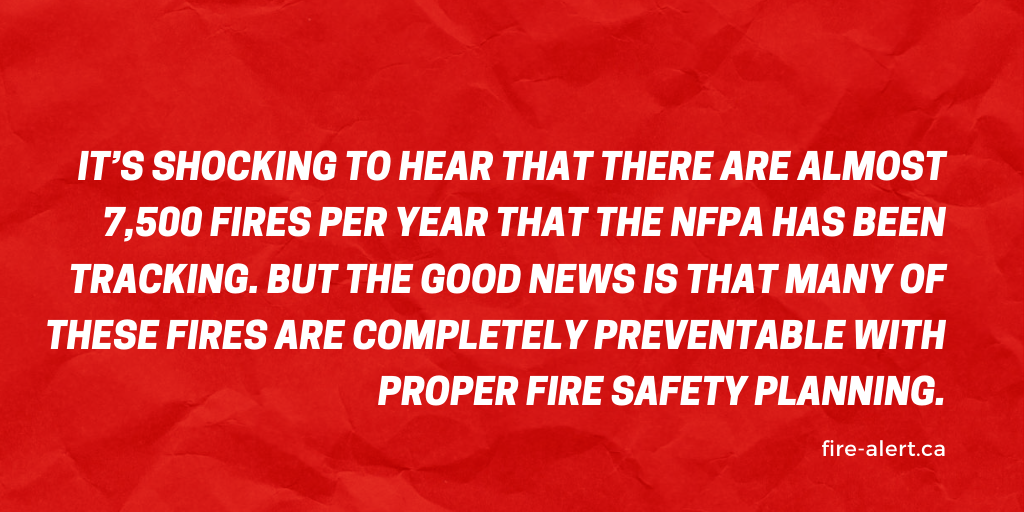Fire Prevention Tips for Restaurants
Safety training and emergency preparedness is an important part of leading a safe team in the restaurant industry. Especially when conditions are already more dangerous than usual, like with industrial cooking equipment. It’s important to abide by safety regulations like WHMIS, but what about fire safety planning in restaurants? We’re going to look at some of the top tips for safety planning and preparedness in restaurants and industrial food service environments so you can keep your team safe and productive.

The NFPA.org tells us about the average 7,410 fires each year that happen in restaurants:
“Cooking equipment was the leading cause of fires in these properties, accounting for 61% of fires and 38% of direct property damage. Electrical distribution and lighting equipment was responsible for 9% of fires, but 21% of direct property damage, while heating equipment was responsible for 9% of fires and 9% of direct property damage. Smoking materials caused 7% of fires and 7% of direct property damage. Four percent of fires had an intentional cause, but these fires caused 10% of direct property damage.”
It’s shocking to hear that there are almost 7,500 fires per year that the NFPA has been tracking. But the good news is that many of these fires are completely preventable with proper fire safety planning.
ModernRestaurantManagement.com provides some advice for fire prevention:
“Consider your facility’s risks. Examining the unique risks of a workplace is an important responsibility for any property manager or building owner. Assess your facility for items that may contribute to the risk of a fire, such as flammable liquids, electrical equipment or storage of combustible materials. Take note of specific hazards and make sure functional and up-to-date fire extinguishers and systems are in place to help minimize the impact of a fire.”
Is your restaurant in a standalone building or is it connected to others in a strip mall or a larger structure? Even if you are not a restaurant, cafeterias inside hospitals and kitchens in hotels and convention centers need to consider how their unique location changes their fire safety plan.
The webstaurantstore.com gives a simple checklist for fire prevention in a restaurant:
-
Have multiple fire extinguishers in your establishment, and do not put them only in your kitchen.
-
Install emergency lights and exit signs throughout your space.
-
Look into appliances with fire suppression systems. When activated, these units can switch off your fuel supply and dispense substances that help to put out flames. Some units release these chemicals automatically and others have manual switches.
Now that you know the importance of fire safety planning for restaurants, check out how we can help with fire extinguisher inspections, recharges, and many other mobile services to keep you and your business safe.